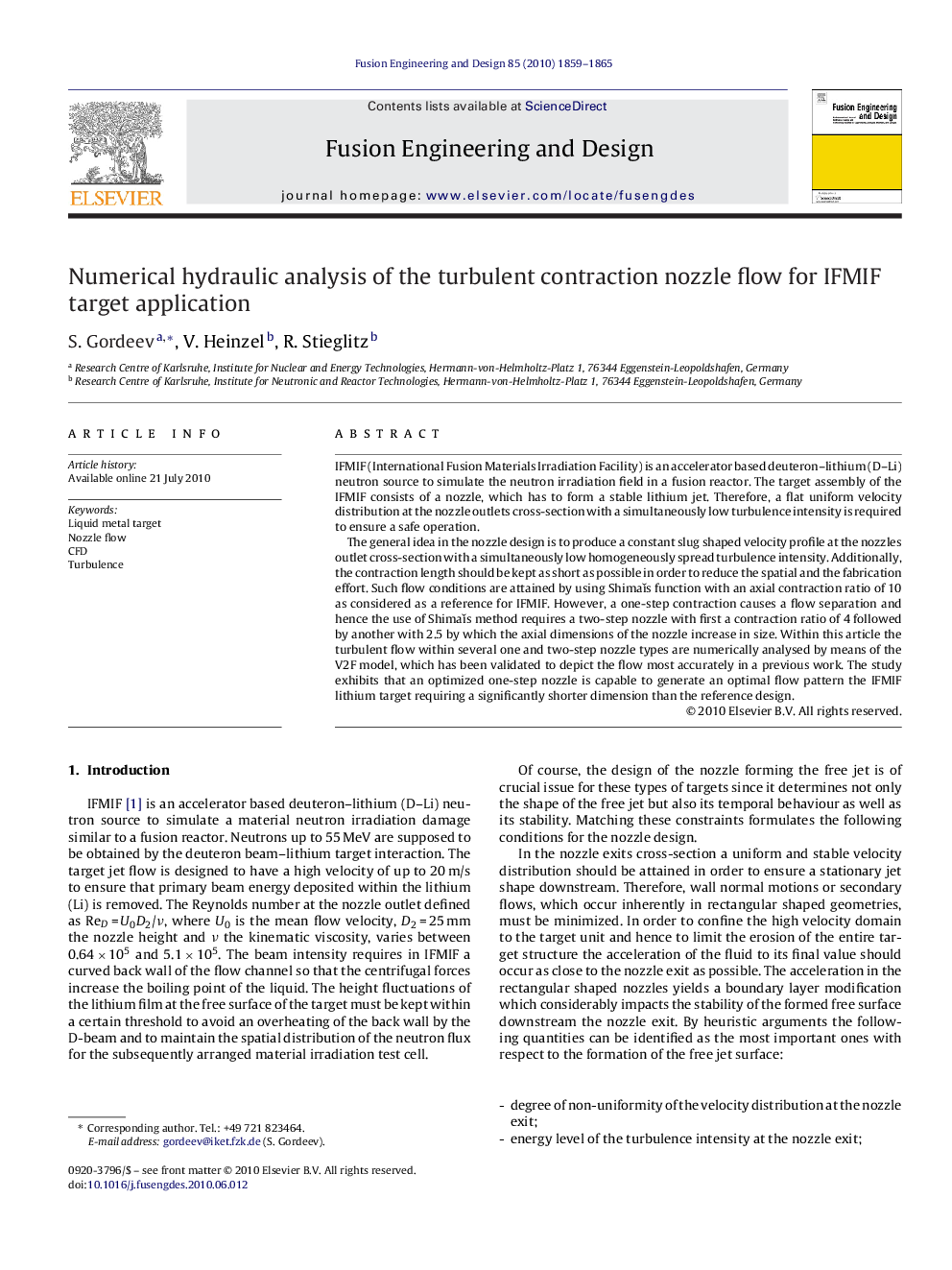| کد مقاله | کد نشریه | سال انتشار | مقاله انگلیسی | نسخه تمام متن |
|---|---|---|---|---|
| 272645 | 505029 | 2010 | 7 صفحه PDF | دانلود رایگان |

IFMIF (International Fusion Materials Irradiation Facility) is an accelerator based deuteron–lithium (D–Li) neutron source to simulate the neutron irradiation field in a fusion reactor. The target assembly of the IFMIF consists of a nozzle, which has to form a stable lithium jet. Therefore, a flat uniform velocity distribution at the nozzle outlets cross-section with a simultaneously low turbulence intensity is required to ensure a safe operation.The general idea in the nozzle design is to produce a constant slug shaped velocity profile at the nozzles outlet cross-section with a simultaneously low homogeneously spread turbulence intensity. Additionally, the contraction length should be kept as short as possible in order to reduce the spatial and the fabrication effort. Such flow conditions are attained by using Shimás function with an axial contraction ratio of 10 as considered as a reference for IFMIF. However, a one-step contraction causes a flow separation and hence the use of Shimás method requires a two-step nozzle with first a contraction ratio of 4 followed by another with 2.5 by which the axial dimensions of the nozzle increase in size. Within this article the turbulent flow within several one and two-step nozzle types are numerically analysed by means of the V2F model, which has been validated to depict the flow most accurately in a previous work. The study exhibits that an optimized one-step nozzle is capable to generate an optimal flow pattern the IFMIF lithium target requiring a significantly shorter dimension than the reference design.
Journal: Fusion Engineering and Design - Volume 85, Issues 10–12, December 2010, Pages 1859–1865